Sumatra bound
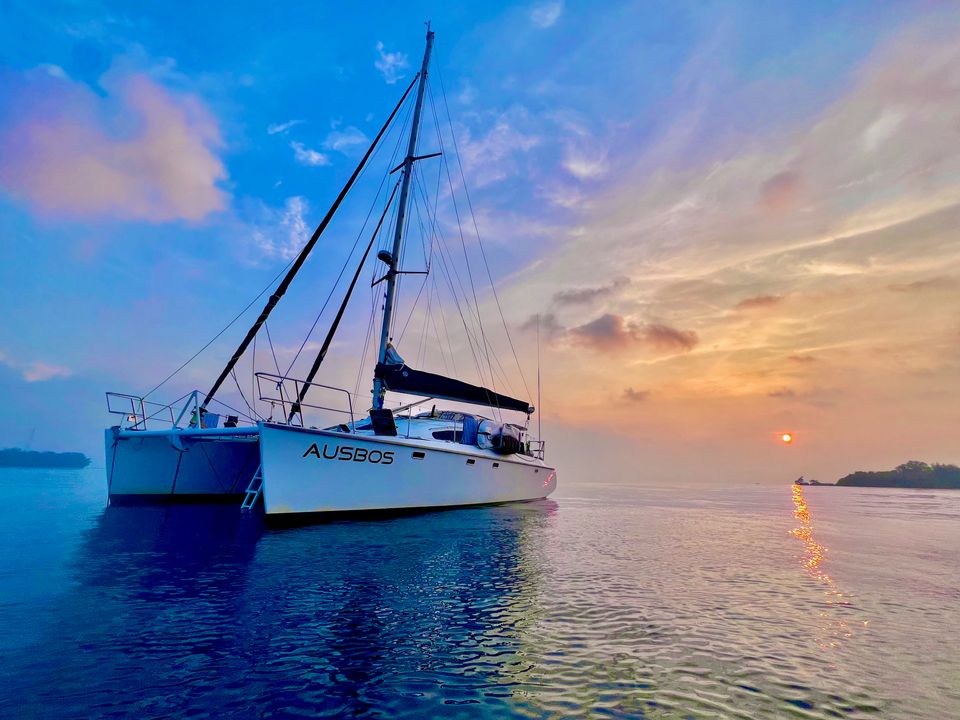
Ausbos leaves the jungles of Borneo on a high, with our friends Emma and Dave still onboard as well as an unwelcome stowaway, namely a gastro bug we picked up on our river adventure. The less said about this, the better I think and most of us recover swiftly, except for poor Dave who must brave the passage to our next destination feeling somewhat suboptimal.
Luckily, it's an easy overnight sail to Belitung and as we drop anchor amongst its boulder islands I wonder yet again at the unique character of this new place in contrast to places we left behind.
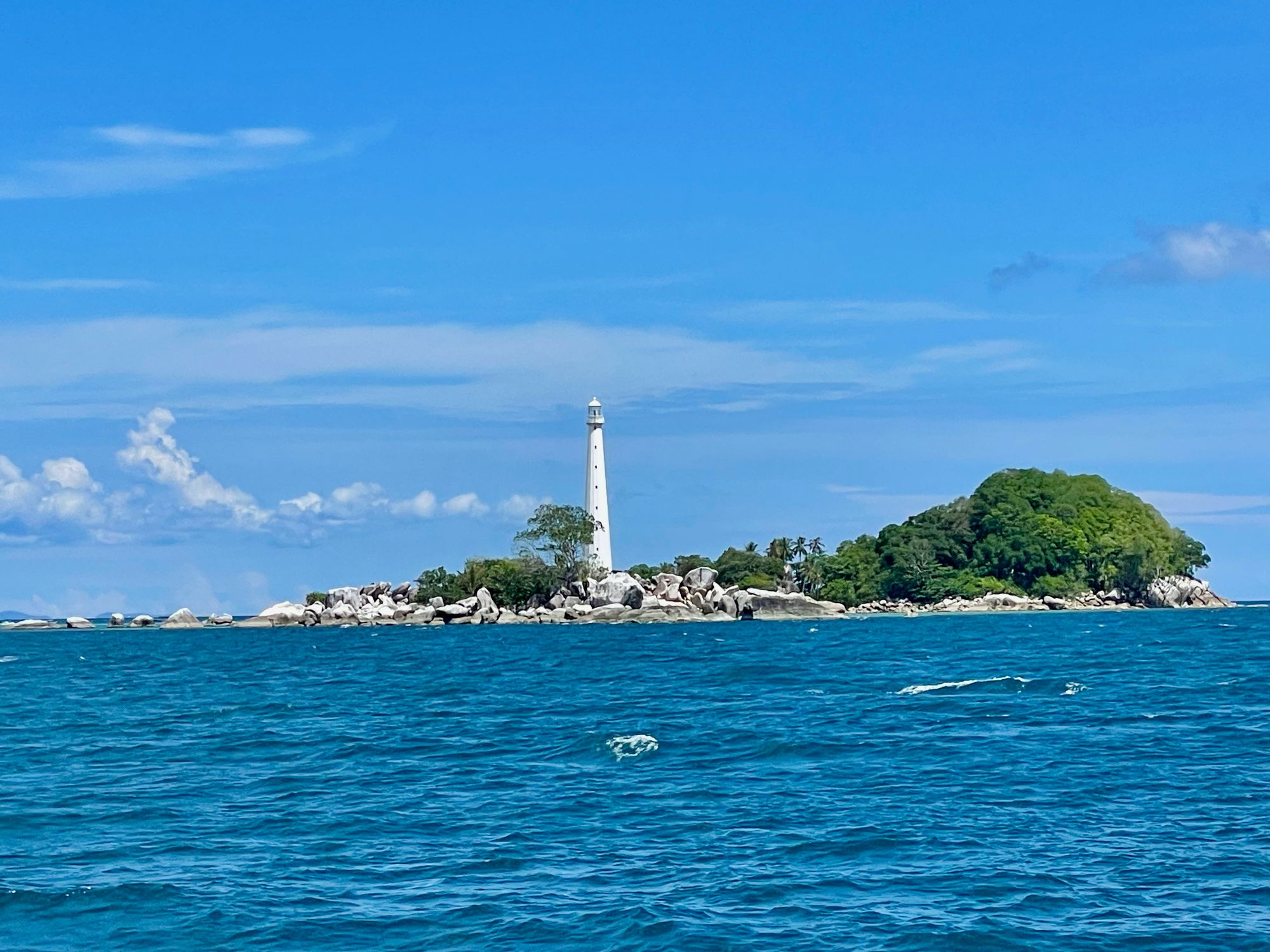
Belitung is a large island located right between Sumatra and Borneo in the Java sea. It's famous for huge granite boulders scattered on beaches and surrounding islets, and is home to some of the nicest and most expansive beaches we've seen in Indonesia yet.
Being only a few hundred miles north of Java, it serves as a holiday destination for well-off Jakartans who are ferried from beach to boulder in local long boats equipped with wooden seats and roofs. Except for brief photo stops at strategically located boulders, we don't see anyone swimming or lingering on the beaches so in a way, we have the whole place all to ourselves. This isn't much different to anywhere else in Indonesia really, other than kids, we've never seen adult Indonesians swim, at least not for fun.
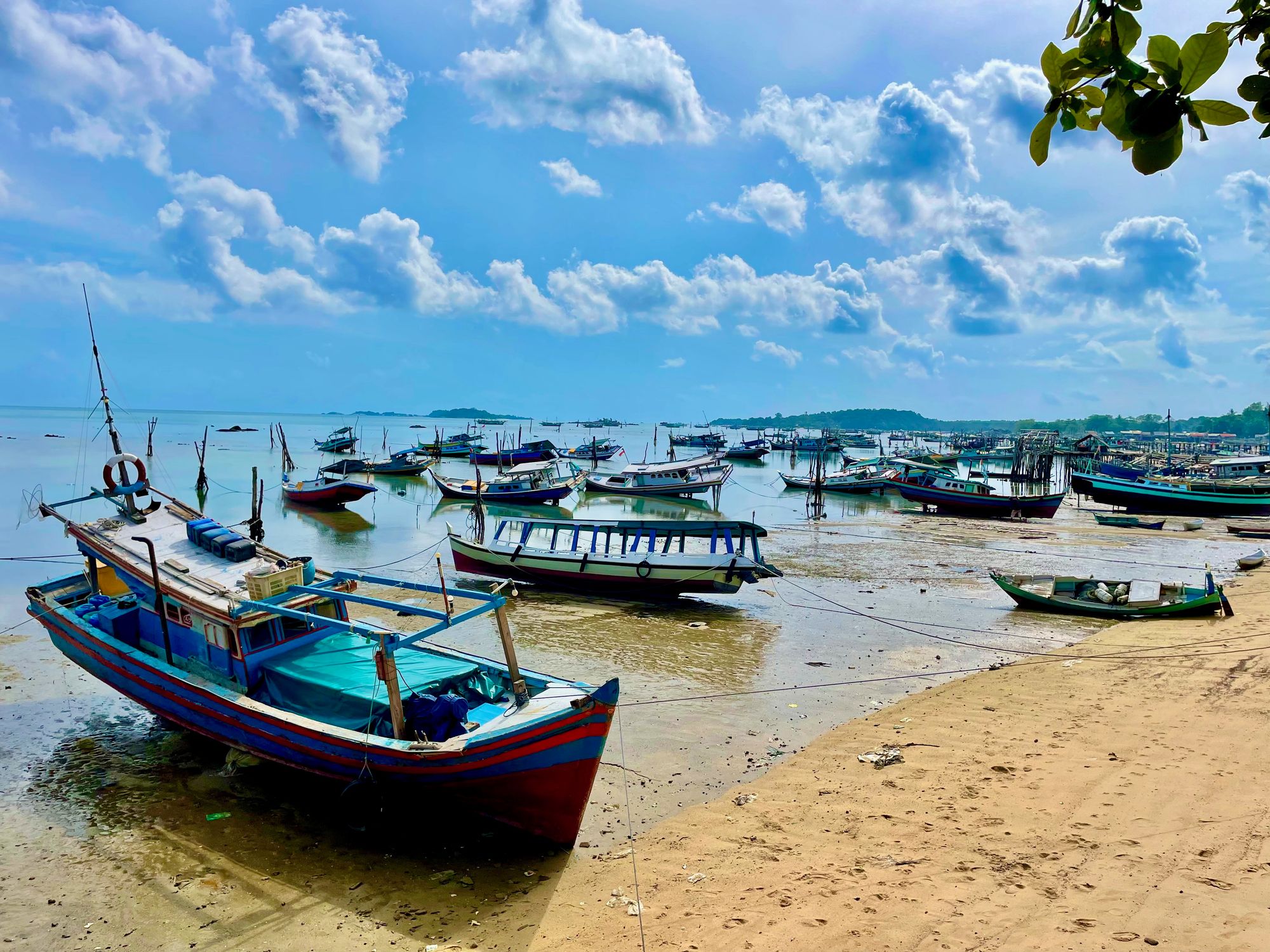
Belitung's strategic location between the Java sea to the south and South China Sea to the north means that the local population is a heady mix of Malay, Chinese, Javanese and other Indonesian ethnic groups who have settled here over the centuries. Originally uninhabited, the island formed part of a Buddhist empire from the 7th century until the Hindu Majapahit empire took over sometime in the 1300 hundreds. The island finally succumbed to a Muslim Sultanate run by the Mataram kingdom from central Java in the 16th century. Now home to migrants from seemingly all over the place, the place holds a certain appeal for an eternal traveller like me.
The main beach near our anchorage is packed with simple seafood restaurants, their wooden tables and benches laid out on the sand and kitchens tucked away in small huts just off the beach. All sit disconcertingly empty for lunch and dinner the entire time we're there despite a tireless procession of long boats packed with tourists buzzing between the boulders. Where they have their meals is a mystery we fail to solve, are we missing where the action is?
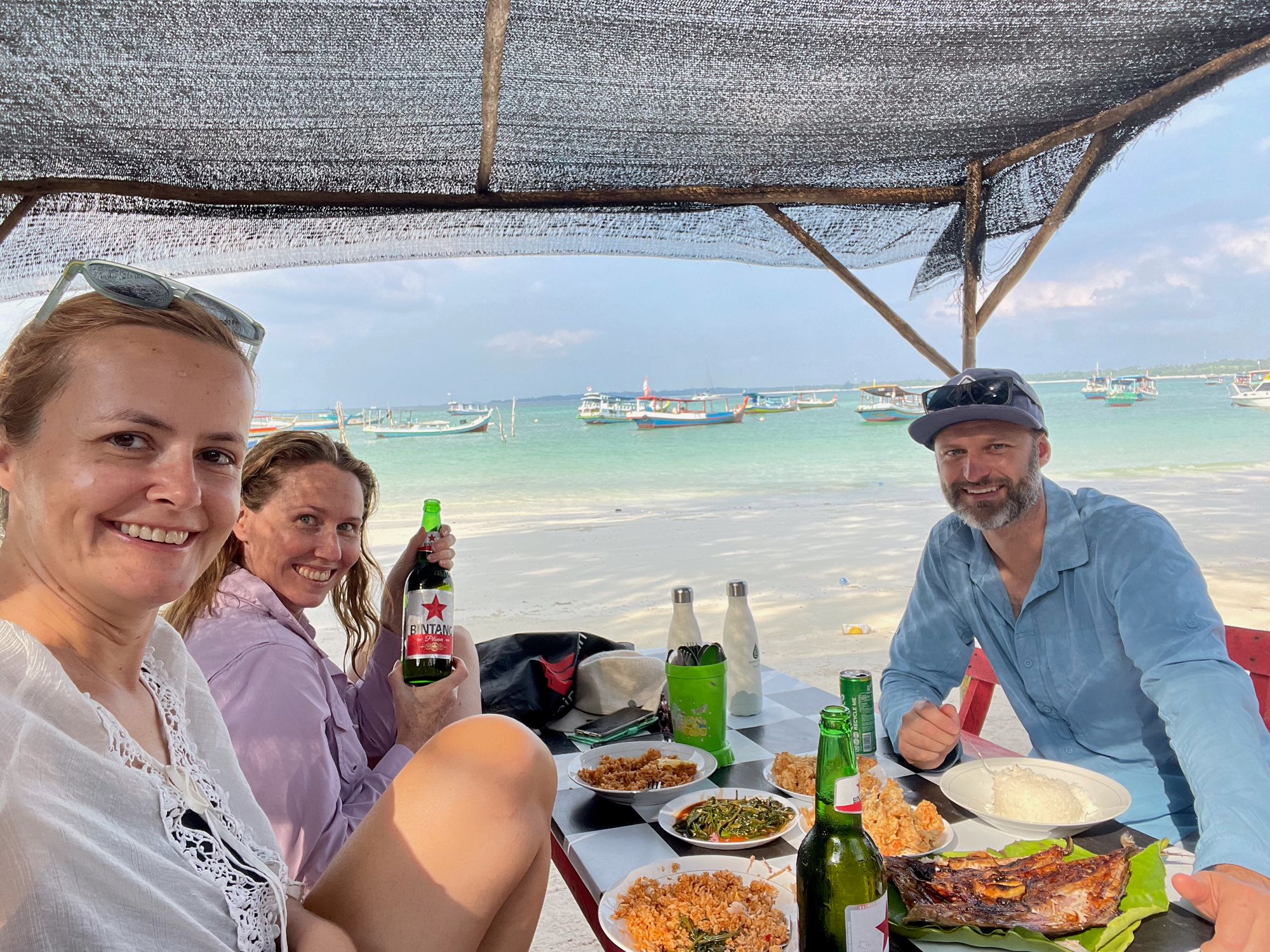
Undeterred from their encounter with food poisoning in Borneo, Emma and Dave are keen to try the local restaurants. We skip a few questionable looking places where the seafood is dug up from the bottom of the freezer when we ask if they're open, finally we plonk ourselves down at a place where the owners seem slightly better organised, or less shocked at the appearance of patrons.
The grilled fish and prawns are tasty but in my opinion, cannot compete for flavour with the melt-in-your-mouth chilli-fried eggplant we sample for dinner later. To be honest, this is only the second time I have ordered fish at a restaurant in Indonesia. We have witnessed too many fishing fleets scouring every corner of ocean here and seen reef after reef devoid of any fish longer than a finger. The scale of the over-fishing is impossible to exaggerate so eating what little is left does not sit well with me, having seen the decimation first hand everywhere we go.

We sniff out a local dive resort owned by an American, claiming to serve the best burgers in Indonesia. The burgers live up to the hype - paired with crispy freedom fries and downed with very cold Bintangs, the meal makes the Ausbos crew a repeat customer.
A cold beer is not to be taken for granted here as just the previous evening, one of the local warungs served us warm beer with a bucket of ice on the side. This is suboptimal for several reasons; ice is generally to be avoided unless you're after stomach cramps or worse but even if you brave it, the beer becomes a severely watered-down mess if you wait for it to actually cool. Lose, lose in other words.
This time, we risk ice overload and drink fast, the best option under the desperate circumstances. The owner serves us dinner in her nighty, which reminds me of an eatery we frequented in Ecuador with a similar approach to staff uniforms. The food is delicious though so all is forgiven until we are asked to leave as soon as the forks are down because clearly, she is ready for bed.
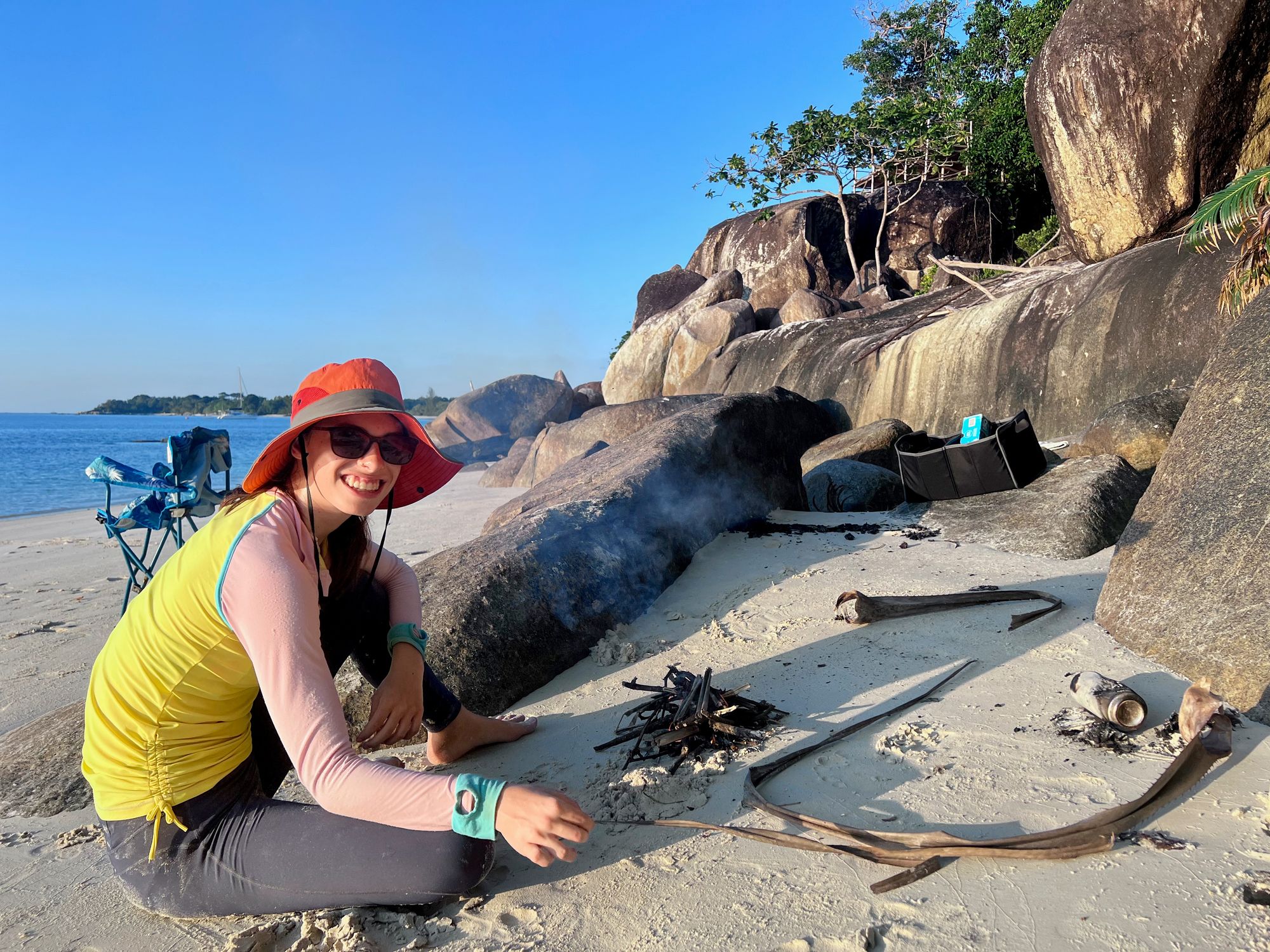
After a couple of days sampling local cuisine and beaches, we hug Emma and Dave goodbye as they continue their holiday in Bali. With nowhere to be, we spend a week pondering our next move, beach fires and shell collection counting as major achievements.
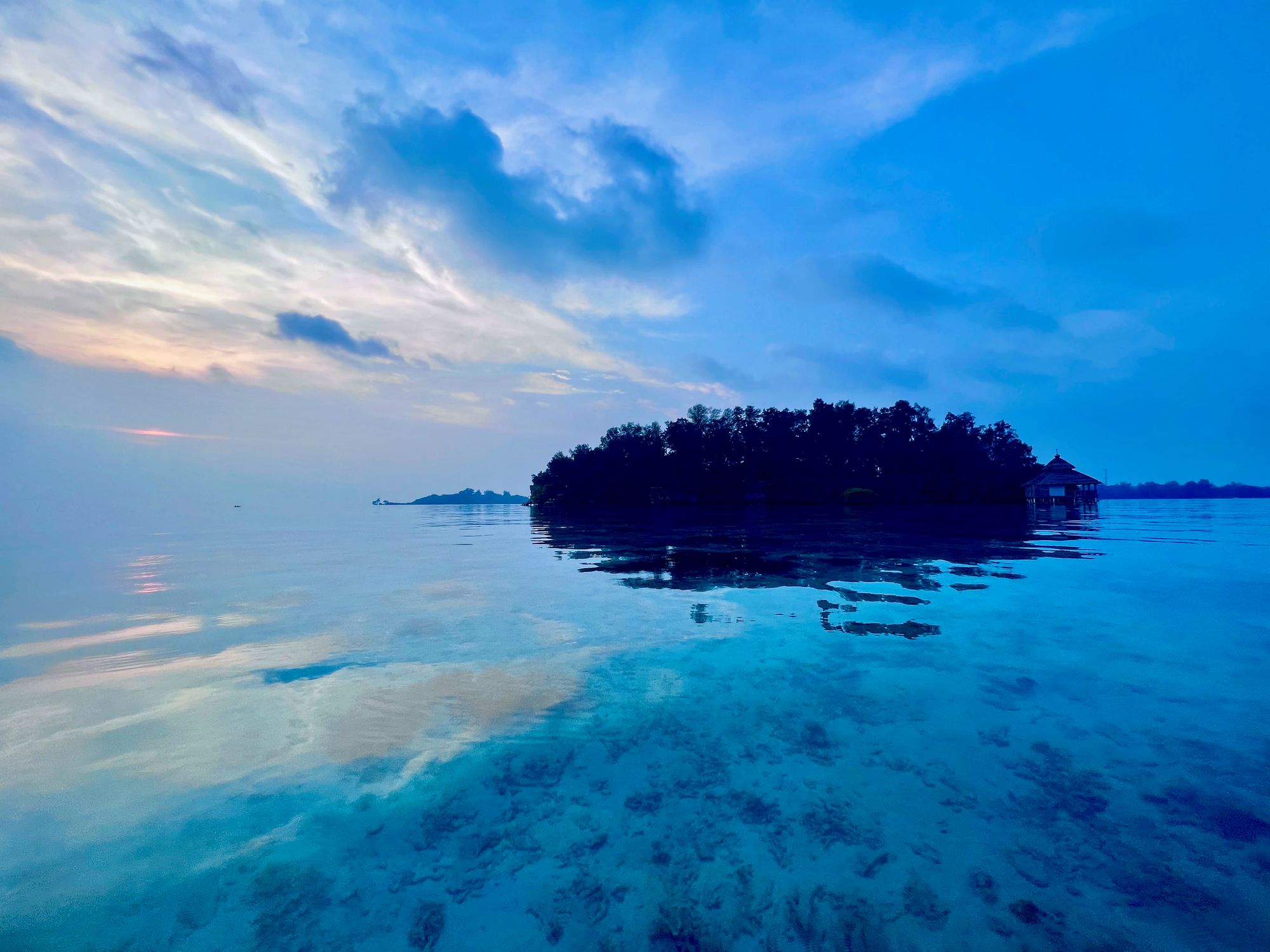
From here, most boats continue on towards Singapore and Malaysia via the Malacca strait, one of the busiest shipping channels in the world with ripping currents to boot. It doesn't exactly spell fun but it is the fastest way to Thailand which, after a year of Indonesian cuisine, holds a certain appeal.
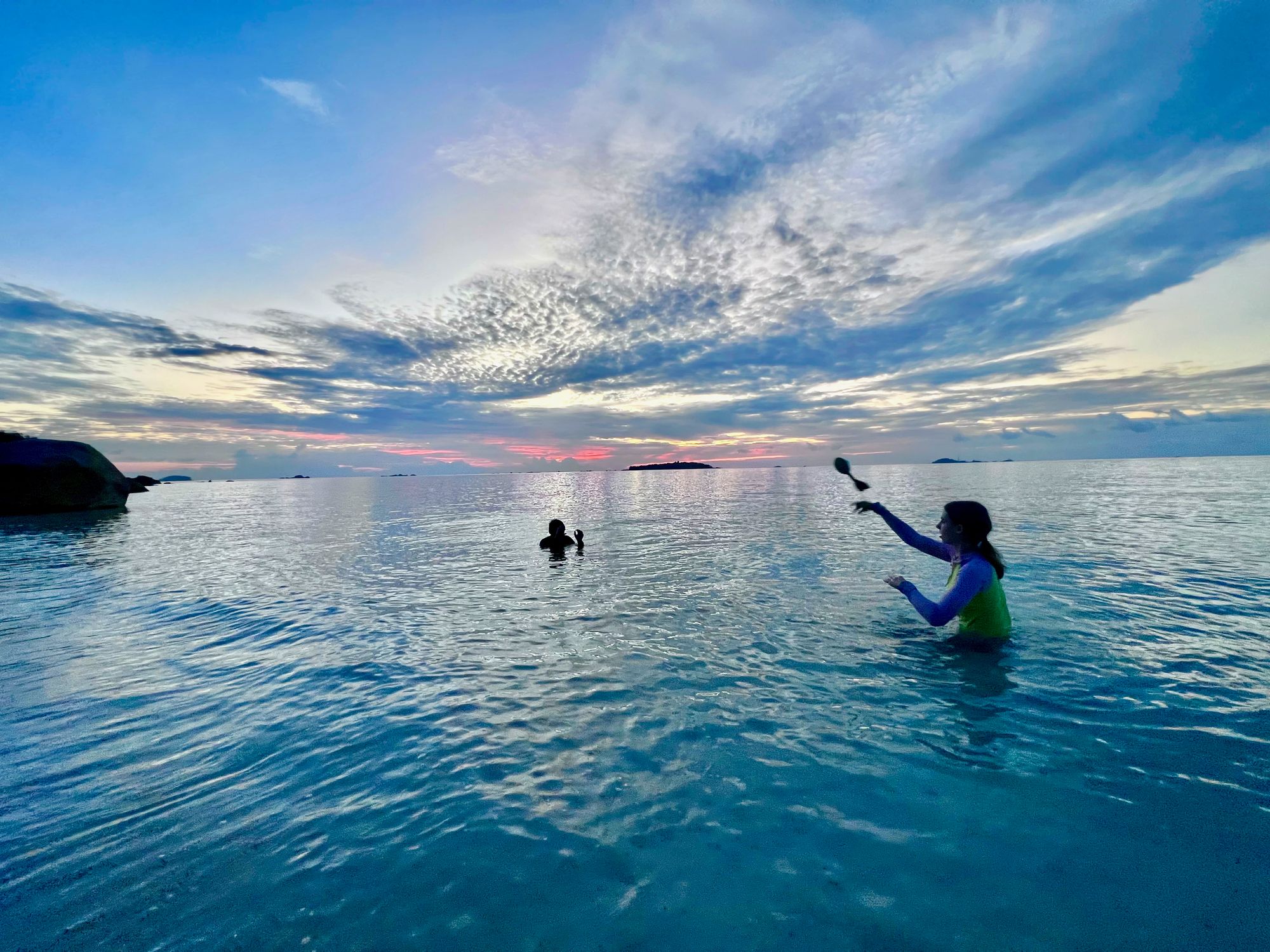
The other option is to island-hop north along the west coast of Sumatra exploring remote tropical islands and world class surf breaks on the way. After a few agonising days of weighing up the pros and cons of each route, we settle on going north through Malacca just because it's less miles to travel.
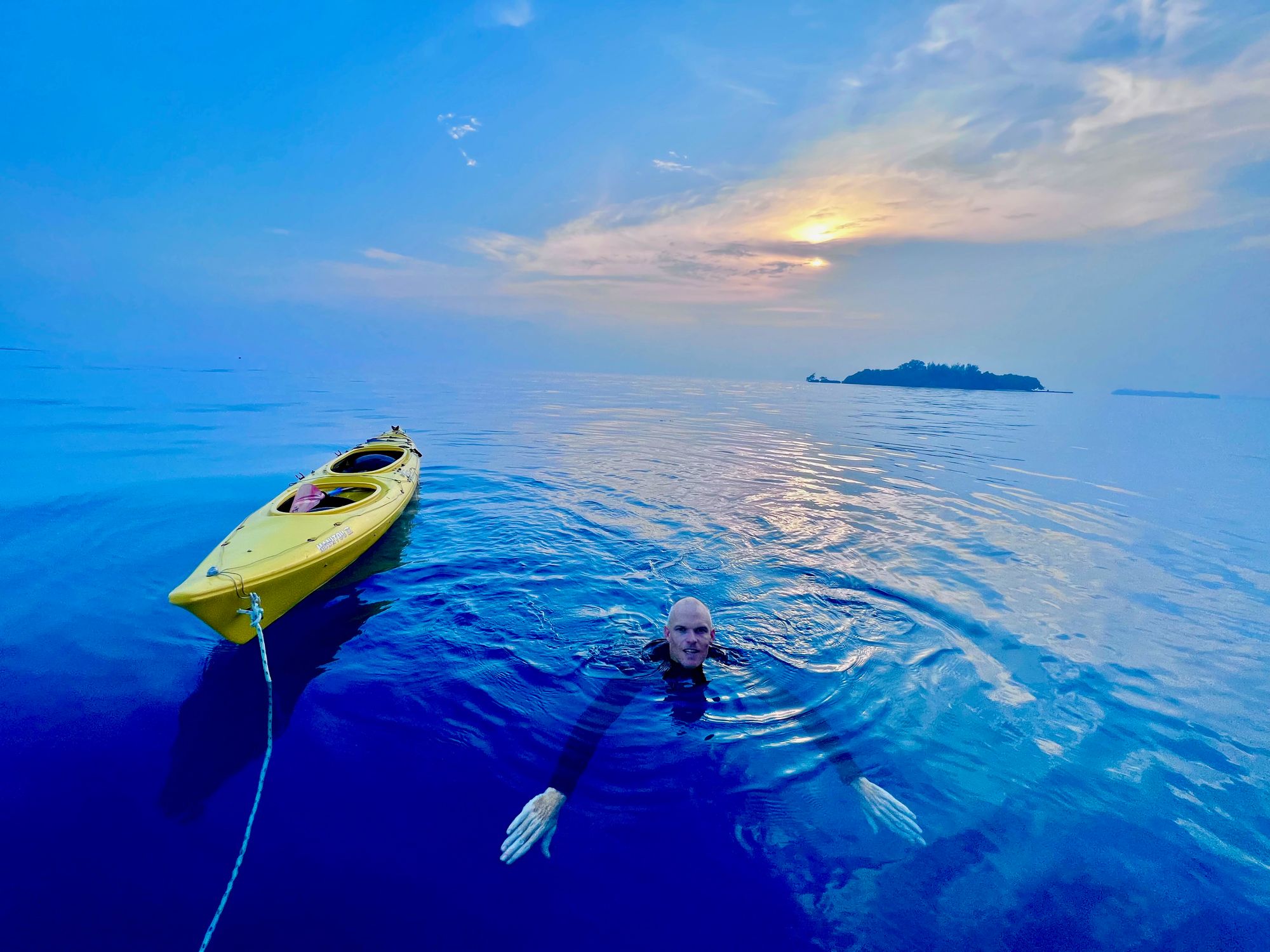
Everyone is happier now that the decision is made and we head to the Belitung provincial capital to reprovision. The decision weighs on me though; the tropical island chains west of Sumatra look incredible and I can't stop thinking that if we don't visit them with our own boat, we probably never will.
So the very next day, we promptly change our mind and turn around to sail south towards Java then West Sumatra. It means covering more miles exposed to the tempers of the Indian Ocean but the destination looks to be worth the trouble.
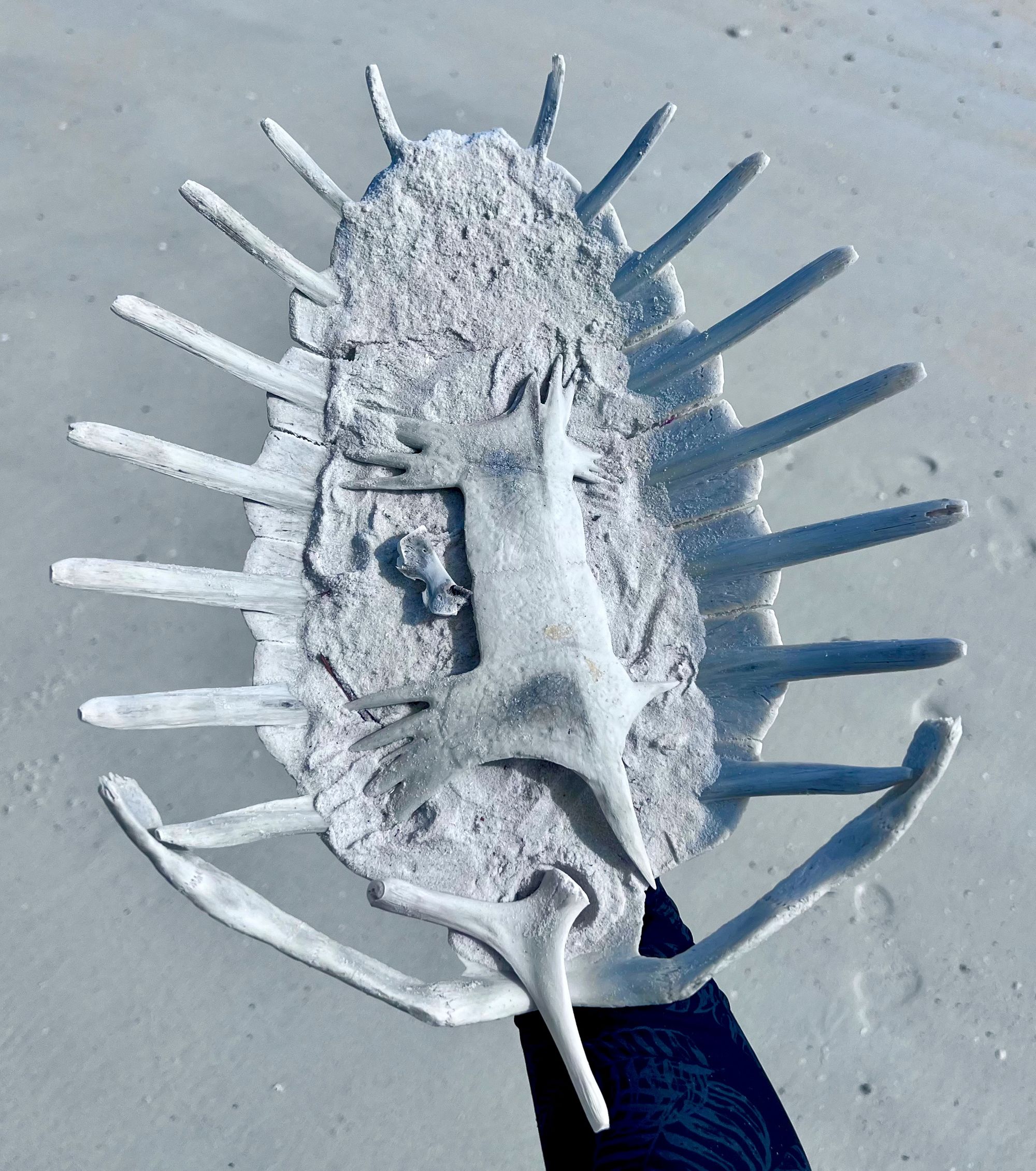
The only issue is our fast expiring visa so before we get to Jakarta, flights to KL are booked again for the obligatory visa run. This time, we're staying for five days and book a very fancy appartment walking distance to the heart of town. It's Lara's birthday, so time for a treat!
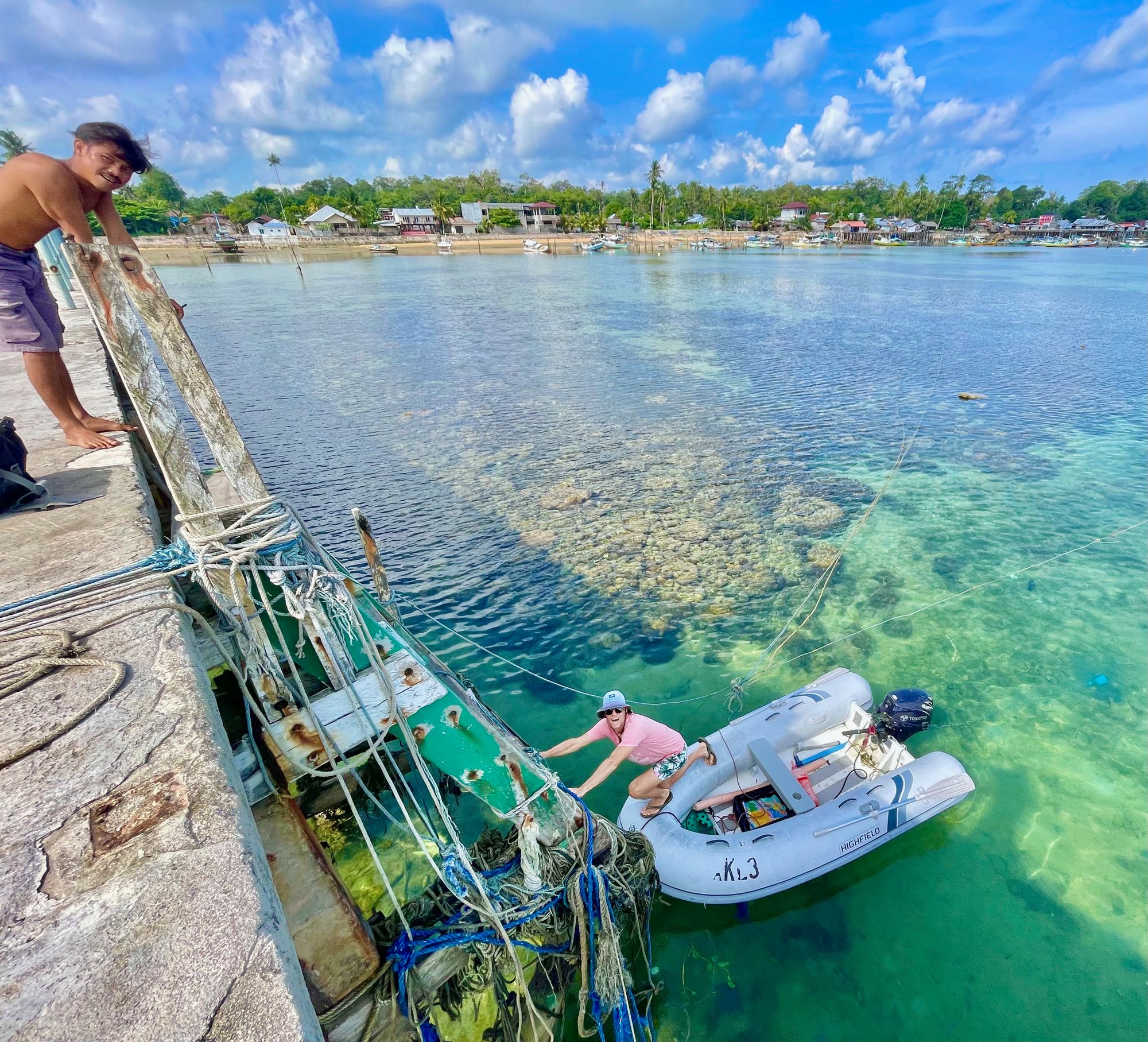
With our flights a week away, we slowly make our way south through the Thousand Islands, a picture perfect island chain just north of Jakarta where small resorts and densely populated villages have left very few unspoiled spots to explore.
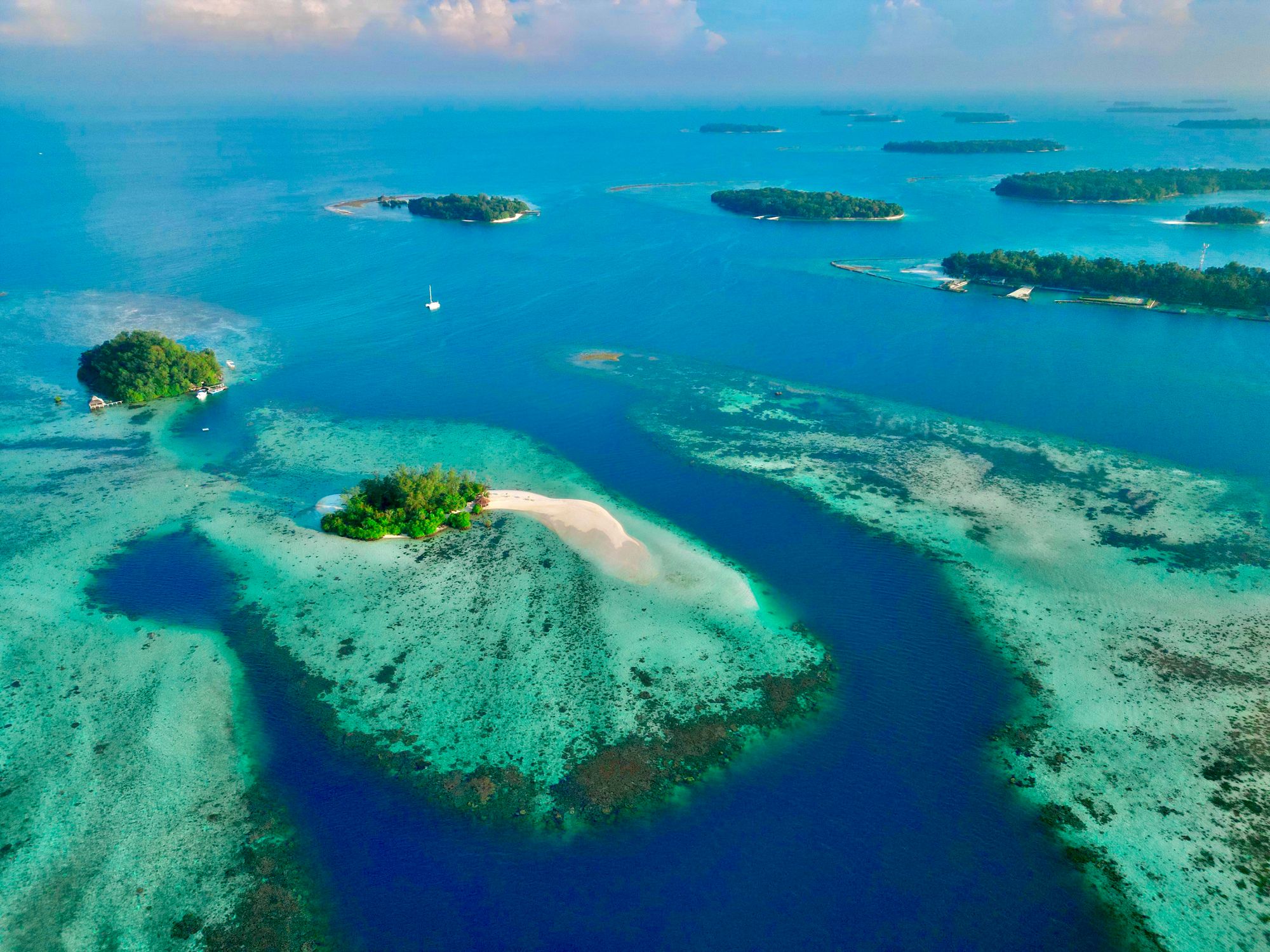
One day we're chased away from an abandoned sand spit by resort staff who claim it for the exclusive use of the neighbouring resort. Oh well. We kayak around the islets and spend a few days swimming off the boat when the current clears the floating rubbish away. This is a place that photographs exceptionally well but is sadly only a superficial shadow of its former self.

The reef is of course mostly dead and the air an unhealthy hue of pink, making for some amazing sunsets but otherwise leaving everyone a bit breathless. At night, and to our surprise, the lights of Jakarta appear in the distance but not a single building can be spotted through the thick smog during the day.
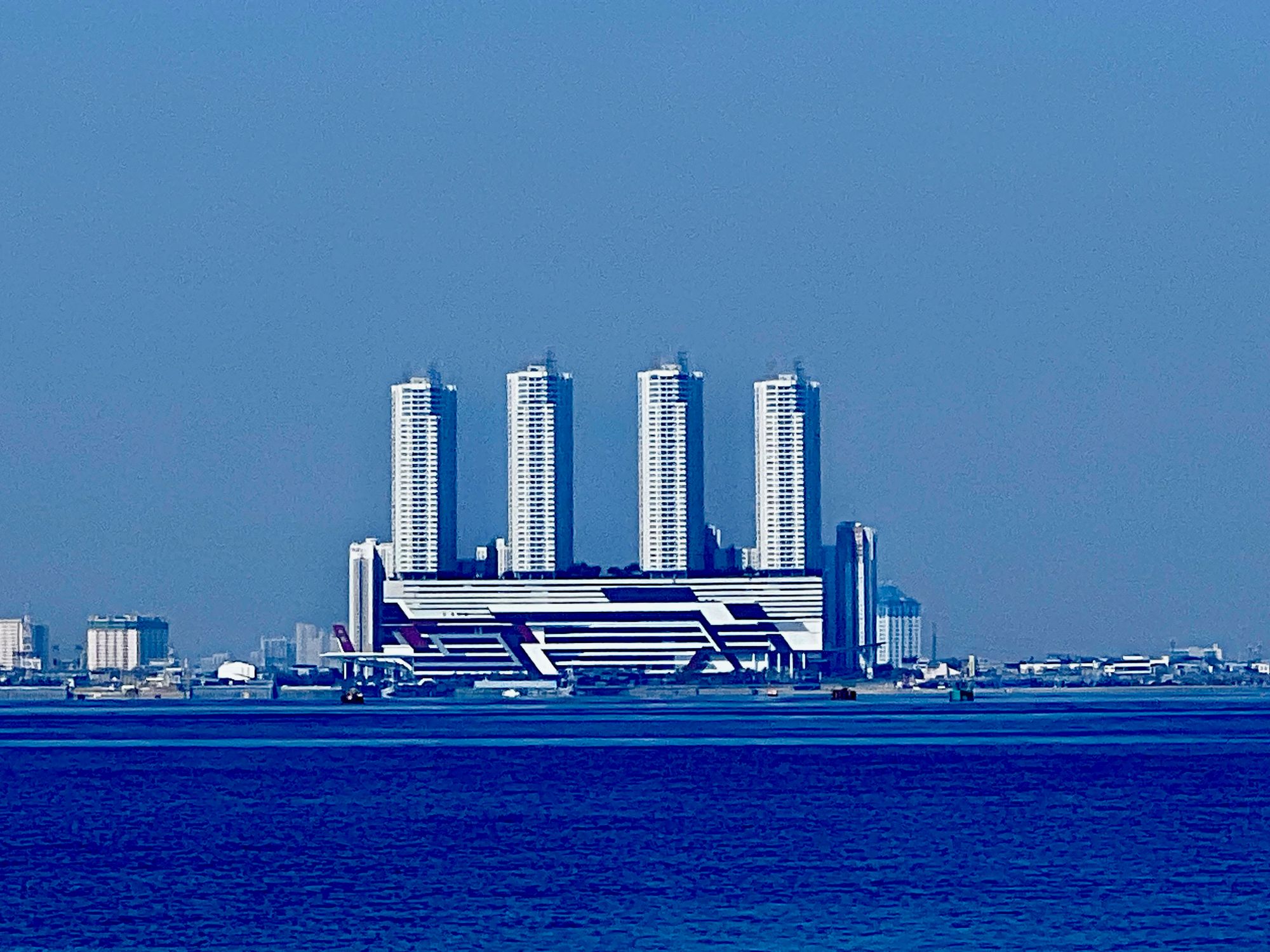
On approach, the buildings of Jakarta can hardly be seen until we're very close but other than that, the harbour is actually more pleasant and better organised than I imagined. We dock Ausbos in Batavia Marina, host to a grand old colonial building with a fancy restaurant and stacked with obscene super-yachts polished daily by the crew to keep the city grime at bay with no owner ever in sight.
We only have a day before our flight to KL so we spend it in places with air conditioning, you guessed it - shopping centres.
And just like that, we're in KL again. The huge apartment we booked is even more impressive in real life and we're only a short walk or ride to all the good stuff.
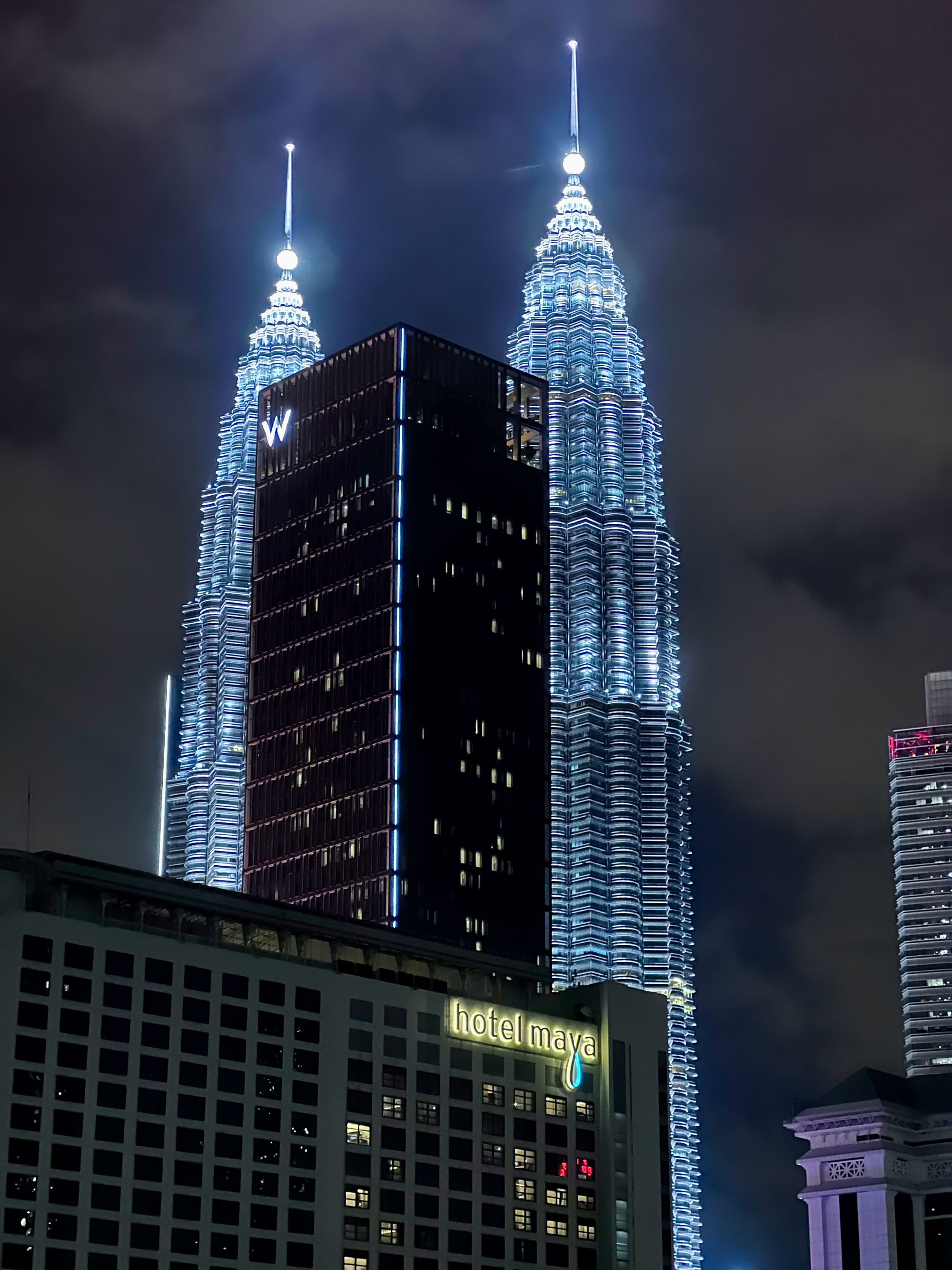
Visiting a city for a second time is always better, we now have our bearings, know the spots to avoid and places we want to see again. Top amongst the latter is the Jalan Alor food night market, which turns into a date night as the lure of the giant TV combined with food delivery proves too hard to resist for the kids. They stay in while Graham and I eat delicious street food and bar hop until we drop.

Lara's birthday kicks off with fresh croissants and coffee from the local cafe, keeping everyone energised during present opening in the morning. A delectable looking black forest cake is ordered from a proper bakery for afternoon tea and everyone gets their dream meal delivered for dinner. Definition of birthday success as designed by Lara.
Back from KL slightly heavier and adults nursing sore heads from too much red wine, we hurriedly leave Jakarta behind and motor west towards Sumatra and the mighty Indian Ocean. The coast west of Jakarta is the most polluted we have seen anywhere, with industrial and shipping polution mingling to devastating effect. Just spending a few days sailing through the area leaves us severely breathless as you can literraly taste the filth in the air. How people live here is too much to ponder, and as always, the extent of environmental vandalism inflicted on this incredible planet by humanity feels truly devastating.

Thankfully, the air clears as we hit the Sunda Strait separating Java and Sumatra. There are some fantastic national parks to explore along the south west of Java but with only two months up our sleeve and over one thousand miles to cover we have to skip them. Indonesia's famed Anak Krakatau (child of Krakatau volcano) is on the way though and we decide to visit after some due diligence is done on the safety of the expedition (ok, googling).
The 1883 eruption of Mount Krakatau volcano was one of the deadliest and most destructive in history with an estimated 35,000 people killed. That eruption produced the smaller but potentially very deadly, child volcano standing today.
As luck would have it, Anak Krakatau decides to have a major eruption just a couple of weeks before our arrival, ramping up the official alert level to the second highest and making this very active volcano even more menacing. Most of the crew on Ausbos are less than willing to approach but I am super keen to see it. I mean, what are the chances?
The last serious eruption here happened in 2018, which produced an ash cloud several kilometeres high, followed by a 4m tsunami killing over 400 people. I can understand the rest of the family's reluctance to go anywhere near it but the lure of driving by an active volcano is simply too hard to resist. I manage to convince everyone it will be safe enough if we keep the recommended 5km distance from the crater and off we go.
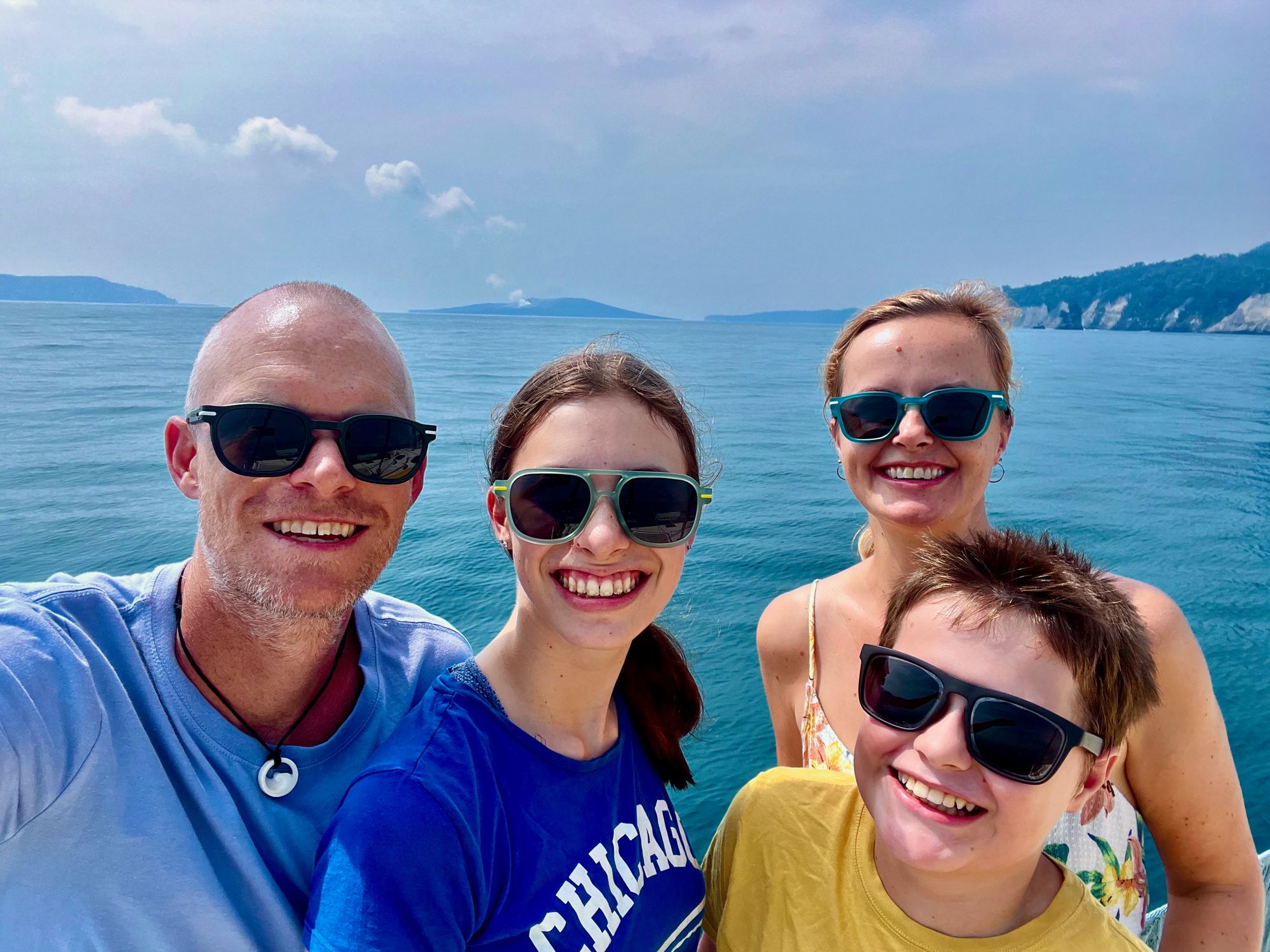
The plume of white smoke emerging from the crater frequently changes shape and thickness, hinting at something seriously unstable smouldering under the surface. It's really tempting to stop and inspect but thoughts of ash clouds and giant waves keep us at bay and we chug away in the heat without incident.
As we leave Sunda Strait behind, the full force of the Indian Ocean hits us. It is 48 hours of non-stop sailing to the first anchorage on the island of Enggano so the weather was meticulously observed for weeks before our departure. The wind is behind us and no storms are predicted, even so the ocean feels mighty.
Our plan is to island hop all the way north to Thailand along the island chains scattered along the west coast of Sumatra, keeping a few hundred miles away from the mainland. Sumatra proper and its mysterious jungles will have to wait for another trip.
Sailing on open ocean again requires some adjustment, we haven't done it since crossing to Indonesia from Darwin and have certainly forgotten how it feels. The might of the ocean swell as it hits the boat is not to be underestimated but thankfully the prevailing 3m swell is behind, pushing us forward to our destination. Some uncomfortable hours are endured when competing and unexplainable swell comes from the side, waves smashing into the hull and rocking the boat in unexpected and unwelcome ways. Add a few squalls and we have what I will call an eventful passage, never fearing for our safety but praying fervently for it to end. We do hit some ripping speeds sailing which is always a treat.
Arriving at Enggano after two nights at sea, tired but hugely relieved, we marvel at the picture perfect, coconut paradise before us. From here, it's island hopping all the way, allowing us to shelter from the raging NW monsoonal storms hitting the area this time of year on an almost daily basis.
The only blight on the horizon is a tug boat with a massive metal barge anchored just off the small island. Our options are limited, this is the only safe anchorage sheltering from prevailing winds and storms. We opt to stay, keeping a safe distance from the tug and its load and dropping our anchor in the shallows just off the beach.

We gather coconuts at the beach and spend a few hours just rejoicing at the unspoilt beauty around us with the roar of the Indian Ocean in the background. Even after eight months of exploring remote Indonesia, this place takes the breath away.
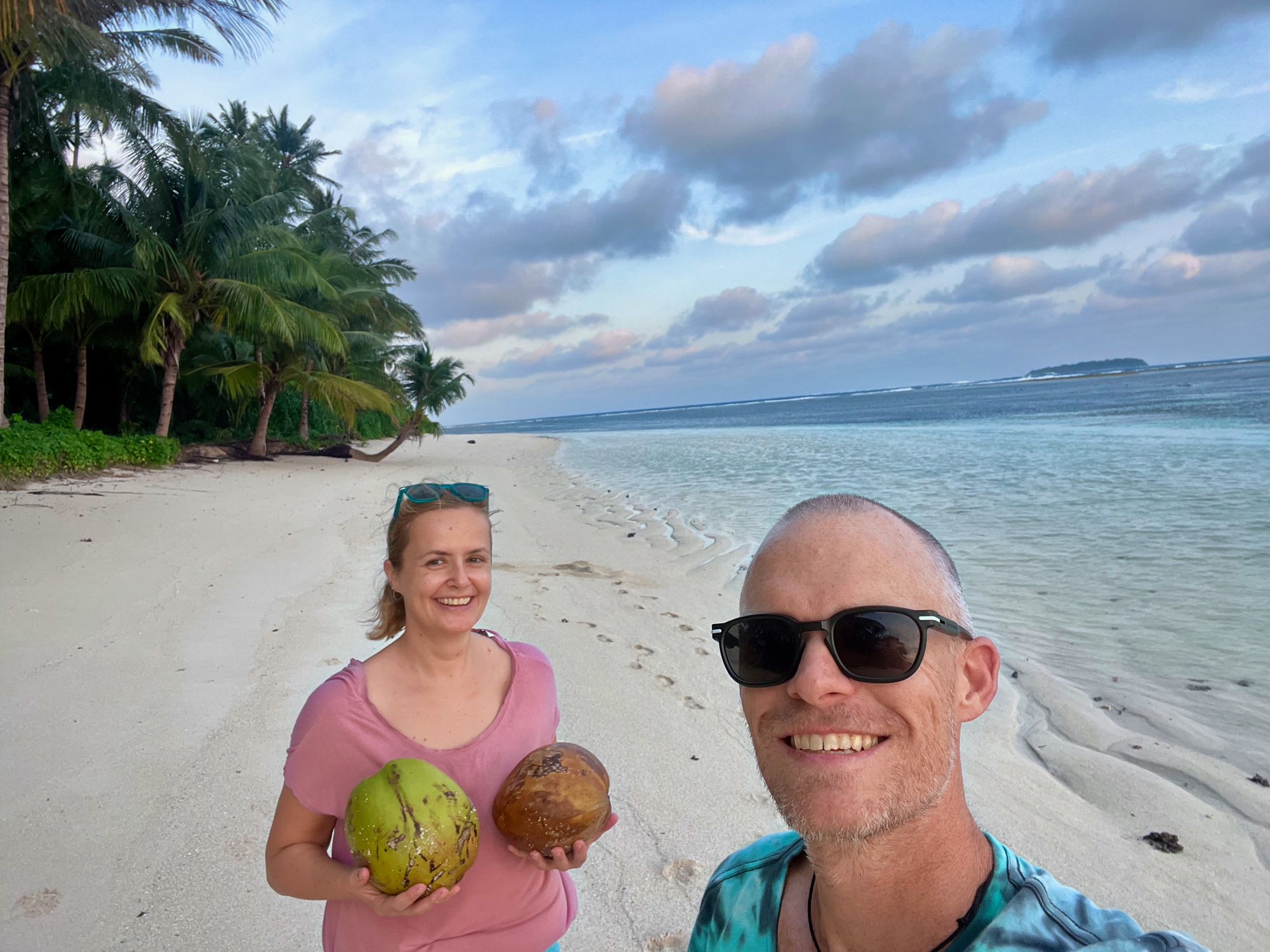
Our joy is rudely interrupted the very next day when a large storm appears just as we're leaving for the beach. The metal barge which until now was a safe distance away is now steadily swinging towards us. We send the kids to the beach promising to follow shortly and Graham pops over to the tug in our dinghy, to check if they are aware of the barge movement.
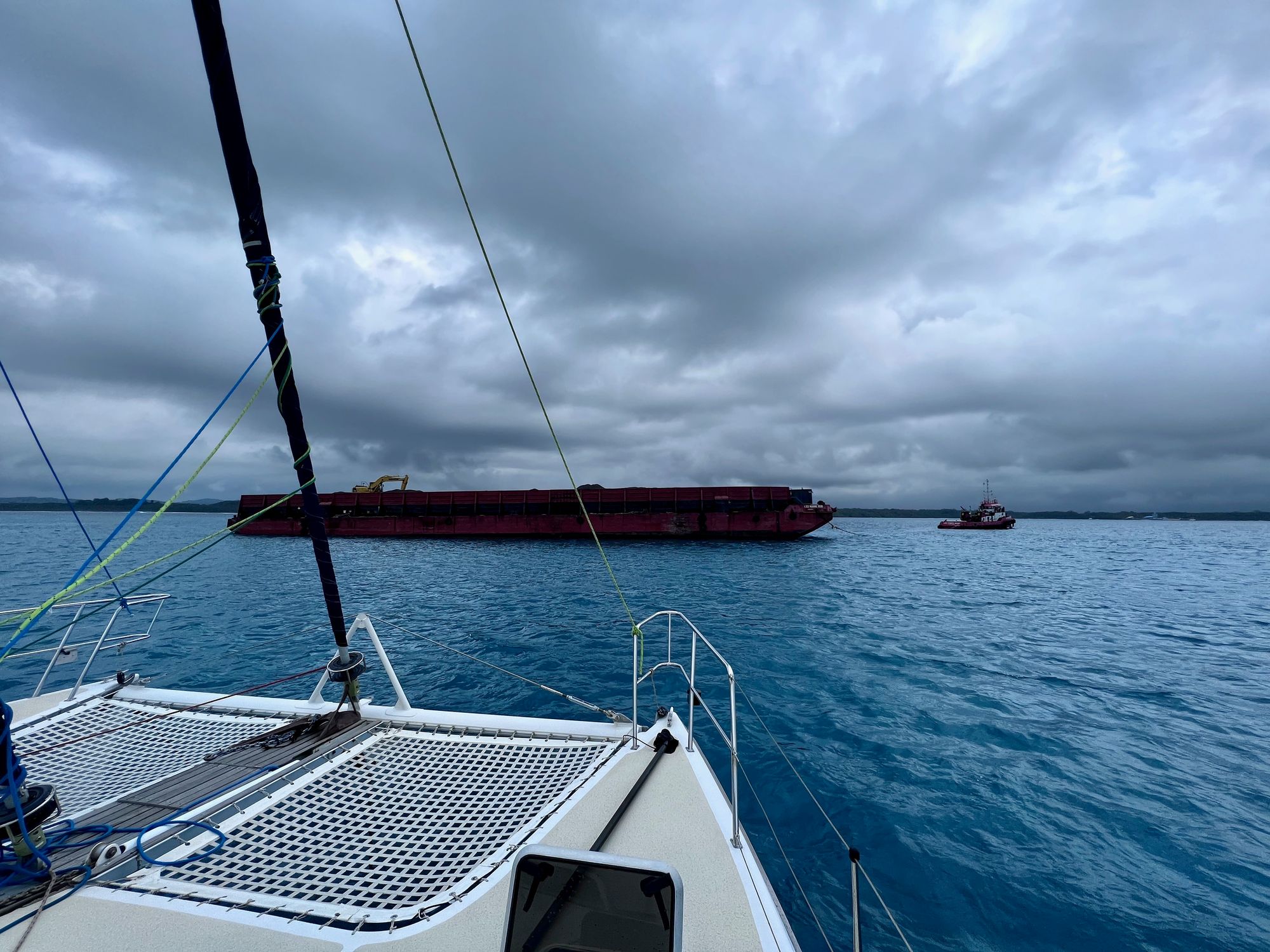
This is a fatal mistake and as I photograph the approaching disaster, we lose a crucial ten minutes with wind picking up even more and pushing the barge ever closer. Graham races back from the tug with no useful information obtained from its captain, who although apparently aware they have dragged has no plan to do anything about it.
We briefly attempt lifting our anchor to leave but the chain of course gets stuck in the anchor winch and with the barge now only meters away, the time for leaving has passed. Now suddenly in full panic mode and painfully aware we are stuck between a barge and a reef we must act quickly to save the boat.

The barge is so close now that we only have time to pull out fenders from storage and holding two each, position them between our boat and the massive metal monster about to squash us.
Our anchor chain now fully extended and stuck under the barge means that our boat cannot move out of the way, if the barge keeps swinging towards us, something bad will happen.
While thinking these hopeless thoughts and holding the barge at bay with four fenders, we alternate running back to the cockpit to radio the tug, screaming at them to move. It's doubtful they understand any of what we say but the panic clearly translates, and slowly, sooo slowly, the barge starts inching forward, away from us. The whole incident probably lasts about an hour and ends with only a broken navigation light on our port side and some serious bruising from a massive fall I suffer running on deck in panic.
Kids paddle back from the beach as the barge moves away, thankfully having failed to grasp the severity of the situation (small mercies) and with the entire incident recorded for posterity.
We get the anchor winch unstuck and get out of there as quickly as possible. The rest of the day is a blur, as soon as we're tucked away somewhere else, both Graham and I collapse into bed, exhausted from the ordeal and in desperate need of sleep to process the adrenaline and cortisol pumping through our veins.
It's not an ideal start to our island hopping adventure but we survive and push north to meet up with friends and debrief over a beer.
Things definitely get better from here.


